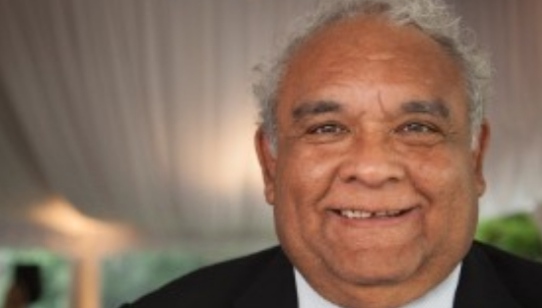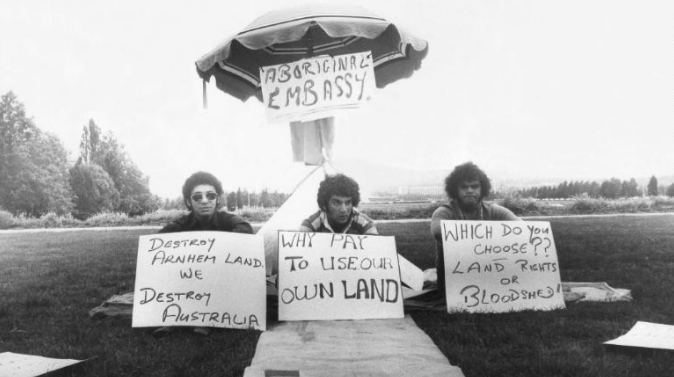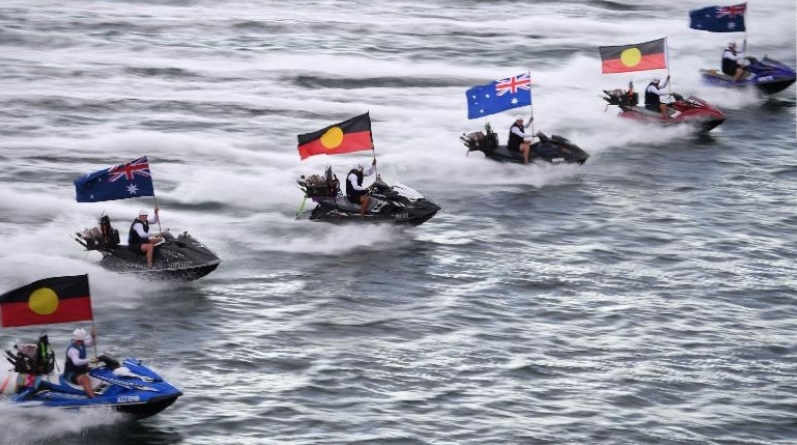Australia’s National Day should be one of pride. Instead it commemorates an invasion
Opinion by Tom Calma
Professor Tom Calma AO is an Aboriginal elder from the Kungarakan tribal group and a member of the Iwaidja tribal group whose traditional lands are in Australia’s Northern Territory. He is the co-chair of national organisation, Reconciliation Australia, the Chancellor of the University of Canberra, and the former Aboriginal and Torres Strait Islander Social Justice Commissioner at the Australian Human Rights Commission. The views expressed in this commentary are his own.
January 26 is, by coincidence, a significant date in the national calendars of two countries, with an important difference.
In India, January 26 marks Republic Day, and celebrates the date when the constitution of India came into effect in 1950. In short: official independence.
In Australia, January 26 marks the day 11 foreign ships sailed into what is now called Sydney Harbour and established a penal colony on the land of the Eora, the Aboriginal people of the area. This act was without permission, agreement or treaty. It set in motion events the Indigenous peoples of this country — Aboriginal and Torres Strait Islander peoples — are still reeling from today. In short: invasion.
I could not think of a starker contrast than these two national “celebrations.”

Tom Calma
Not only does January 26 mark the day the dispossession of Aboriginal and Torres Strait Islander peoples began, it sets up European invasion as an important source of Australian identity and pride. In doing so, it ignores more than 60,000 years of pre-colonial history. As we approach the end of January 2022, many Australians are once again questioning why this date continues to be celebrated.
Aboriginal and Torres Strait Islander people have been challenging the date since at least January 26, 1938 when, as a culmination of years of work by the Australian Aborigines League (AAL) and the Aborigines Progressive Association (APA), the first Day of Mourning was held.
On this day, crowds gathered in Sydney to celebrate the 150th anniversary of the arrival of Europeans in Australia. Afterwards, hundreds of Aboriginal people and their supporters took part in a silent march in mourning of the devastating impact of colonization, the consequences of which include the theft and destruction of lands and cultures; decimation of populations by disease and massacres; destruction of families and kinship; ongoing discrimination; and economic, political and social exclusion.
Indeed, the 1938 protest was “against the callous treatment of our people by the white men during the past 150 years,” Day of Mourning organizer, Jack Patten, told fellow demonstrators.
Since then, January 26 has been symbolic for many Aboriginal and Torres Strait Islander peoples as a lightning rod for protest and awareness raising.

Activists Mike Anderson, Billie Cragie and Bert Williams demonstrate at the Aboriginal Tent Embassy on the lawns of Parliament House, Canberra, in 1972.
This will be a particularly significant year, As 2022 marks 50 years since the Aboriginal Tent Embassy was established in the nation’s capital, Canberra, on January 26, 1972. It was on this day that four Aboriginal men with a beach umbrella — and the weight of history behind them — set up on the lawns in front of the then-Australian Parliament House to bring Aboriginal and Torres Strait Islander land and justice back to the forefront of national debate.
The term “embassy” was used to bring attention to the fact Aboriginal people had never ceded sovereignty nor engaged in any treaty process with the British Crown. To this day, the Embassy remains a site of protest for Indigenous land rights, sovereignty, and self-determination.
In the intervening decades, the language we use to talk about January 26 has changed hugely. For at least the past 30 years, Aboriginal and Torres Strait Islander peoples have reclaimed the day as “Invasion Day” or “Survival Day” to highlight, promote and share the ongoing culture and survival of First Nations cultures through marches, protests, festivals, vigils, and memorials.
While some argue that a push to change the date is divisive, the intent is actually to bring us closer together.
Reconciliation is about fostering better relationships so that we can build a just, equitable and more unified tomorrow. Reconciliation must be based on a foundation of trust, truth and honesty regarding our past. Expecting Aboriginal and Torres Strait Island Peoples to ignore or look past the significance of Australia Day and what it has meant for them is simply inconsistent with reconciliation.

Jetskis fly the Australian and Aboriginal flags during Australia Day celebrations in Sydney on January 26, 2021.
To recognize and heal, action must be taken and changes made. A date change is as necessary as it is straightforward. So straightforward, in fact, we’ve done it several times in the past. Over the last century, there have been various dates celebrating “Australia Day,’ including on July 30 in 1915 as part of World War I fundraising efforts. It wasn’t until 1994 that January 26 became a national public holiday.
While we cannot change history, we must address how we deal with this day in a respectful way. Australia is not alone in this. We watch with interest as Columbus Day, a day that celebrates the arrival of Christopher Columbus in the Americas, is now being negotiated in the United States. A growing number of US states and cities have replaced Columbus Day with Indigenous Peoples Day, a holiday meant to honor the culture and history of the people living in the Americas both before and after Columbus’ arrival.
In mainstream Australia, we’ve also seen this change unfolding. A growing number of local councils recognize January 26 is not a national holiday all Australians can celebrate. Companies are offering employees flexibility regarding working on January 26. And it doesn’t get more mainstream than when Cricket Australia removed the words, “Australia Day,” from branding cricket matches on that day.
Reconciliation Australia’s bi-annual Australian Reconciliation Barometer shows these actions mirror changing community attitudes, with support for moving the date continuing to grow. The barometer also shows close to 90% of the general community understand we must tell and accept the truth of our history to move forward.
More than 230 years after the first fleet’s arrival, the ongoing impact of the events of January 26, 1788, can be seen and felt in Australia across many fronts, including disturbing rates of incarceration of First Nations peoples; the growing over-representation of Indigenous children in out-of-home care; the huge disparities in health outcomes for Indigenous and non-Indigenous Australians, and the non-resolution of issues of sovereignty, land and representation.
No treaty was ever signed with Australia’s Indigenous peoples; no recognition ever given to our existence. January 26 cannot serve as a unifying date; not now or in the future, as more and more Australians in the wider community come to understand and respond to the truth of our history.
This year, we are once again asking all Australians to have brave conversations with family, friends and colleagues about how we celebrate January 26, and to reflect on the benefits of a new date for a truly unifying national day of reflection and celebration.




